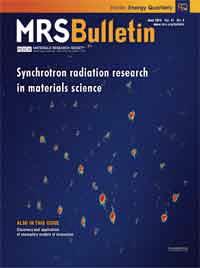

Published on the 30th June 2016 by ANSTO Staff
The editors of a special issue of the Materials Research Society MRS Bulletin have suggested that future research trends must utilise complementarity—applying multiple techniques using different quantum beams for a more efficient and effective characterisation of materials.
At ANSTO, Liss has developed the concept of the materials oscilloscope, in which two-dimensional diffraction rings are captured in real time; creating a movie while a specimen undergoes thermo-mechanical treatment.
Characteristic traces in diffractograms help distinguish various deformational and annealing processes, such as grain coarsening, refinement, subgrain formation, grain rotation, slip, twinning, dynamic recovery and recrystallisation.
It is reported that high energy X-ray investigations with time-resolved in situ and in operando experiments are important for the analysis of cathode synthesis, the loading cycle, charge and discharge processes and studies of buried layers in energy storage materials.
“With the refinements and advances we have seen in synchrotron techniques, complemented by neutron scattering, the future is very bright indeed for materials science research and industrial applications,’ said Liss.
Link to publication: http://dx.doi.org/10.1557/mrs.2016.112
Link to a MRS webinar on the topic: http://www.prolibraries.com/mrs/?select=session&sessionID=6218